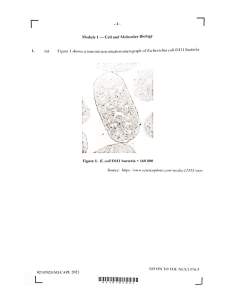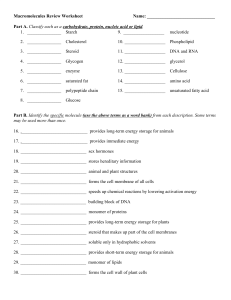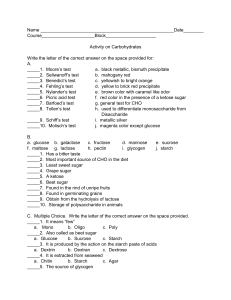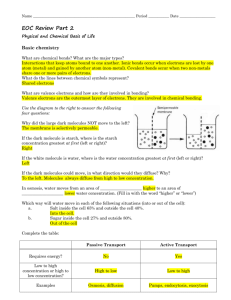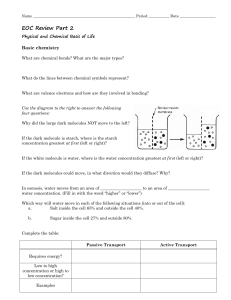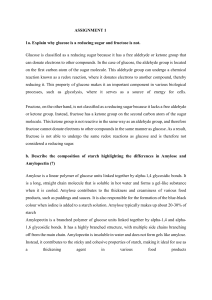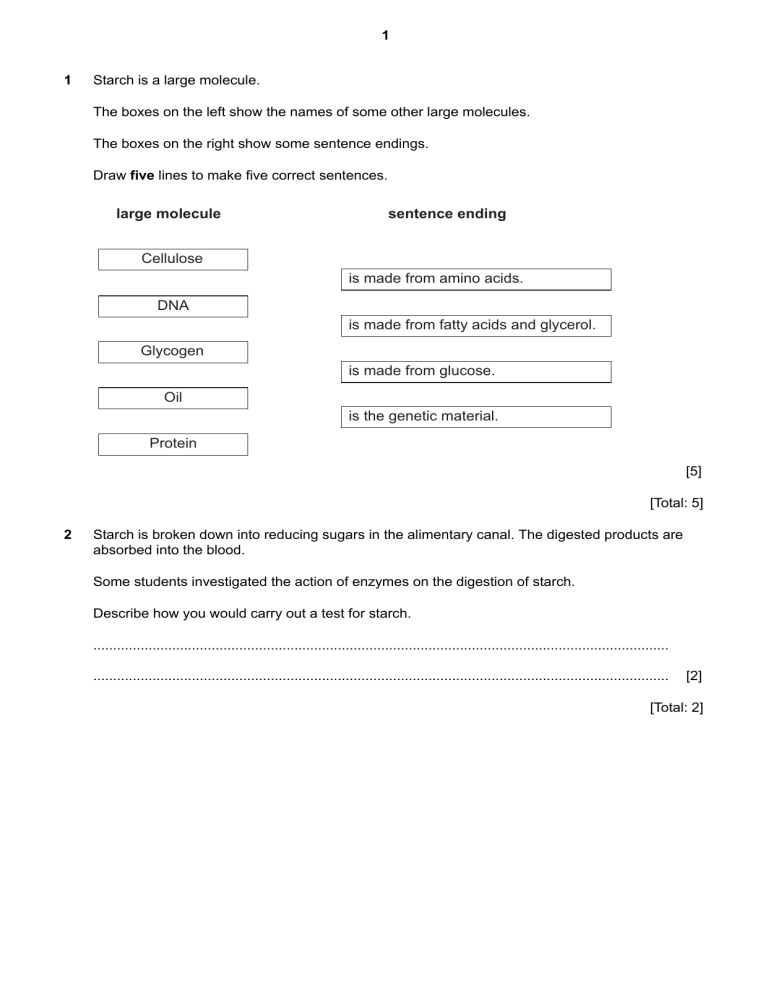
1 1 Starch is a large molecule. The boxes on the left show the names of some other large molecules. The boxes on the right show some sentence endings. Draw five lines to make five correct sentences. large molecule sentence ending Cellulose is made from amino acids. DNA is made from fatty acids and glycerol. Glycogen is made from glucose. Oil is the genetic material. Protein [5] [Total: 5] 2 Starch is broken down into reducing sugars in the alimentary canal. The digested products are absorbed into the blood. Some students investigated the action of enzymes on the digestion of starch. Describe how you would carry out a test for starch. .................................................................................................................................................. .................................................................................................................................................. [2] [Total: 2] 2 3 The diagram shows part of a DNA molecule from a chromosome of a cat. Complete the diagram by writing the letters for the base sequence of the other strand of the DNA molecule. [1] [Total: 1] 4 Water is an important substance for plants. Describe two uses of water in plants. 1 ............................................................................................................................................... 2 ............................................................................................................................................... [2] [Total: 2] 3 5 This question is about biological molecules. Choose words or phrases from the list to complete the sentences. Each word or phrase may be used once, more than once, or not at all. calcium carbon carbon dioxide carbohydrate cellulose chloroplasts fat glycerol glycogen iron methane nitrogen oxygen protein starch Fats are composed of the elements .............................................. , hydrogen and .............................................. only. All proteins contain these three elements and the element ............................................. . Glucose is a type of ............................................... . Animals store excess glucose as .............................................. in the liver. Plants store excess glucose as .............................................. . Plants also convert glucose to .............................................. which is used to make cell walls. [7] 4 [Total: 7] 6 In an investigation, students kept unripe bananas at room temperature for eight days. They studied some of the changes during ripening. Each day the students took one banana and: • • observed the colour of the banana skin; removed a sample of the flesh tissue and estimated the reducing sugar content. The table below shows the students' results. time / days (a) (i) change during ripening skin colour reducing sugar content / % 1 green 5 2 green and yellow 12 3 mostly yellow 18 4 all yellow 25 5 all yellow 30 6 yellow, some brown 29 7 yellow and brown 30 8 mostly brown 30 Suggest on which day the bananas became ripe. State one reason for your answer. day.......................................................................................................................... reason.................................................................................................................... ................................................................................................................................ [2] (ii) The reducing content increased as the banana ripenend. Calculate how many times greater was the sugar content on day 5 compared with day 1. Show your working. ........................... [2] 5 (iii) Suggest the source of the reducing sugar. ................................................................................................................................ ................................................................................................................................ [1] [Total: 5] 7 Describe how you would safely carry out a test for reducing sugars. .................................................................................................................................................. .................................................................................................................................................. .................................................................................................................................................. .................................................................................................................................................. .................................................................................................................................................. .................................................................................................................................................. [3] [Total: 3]


